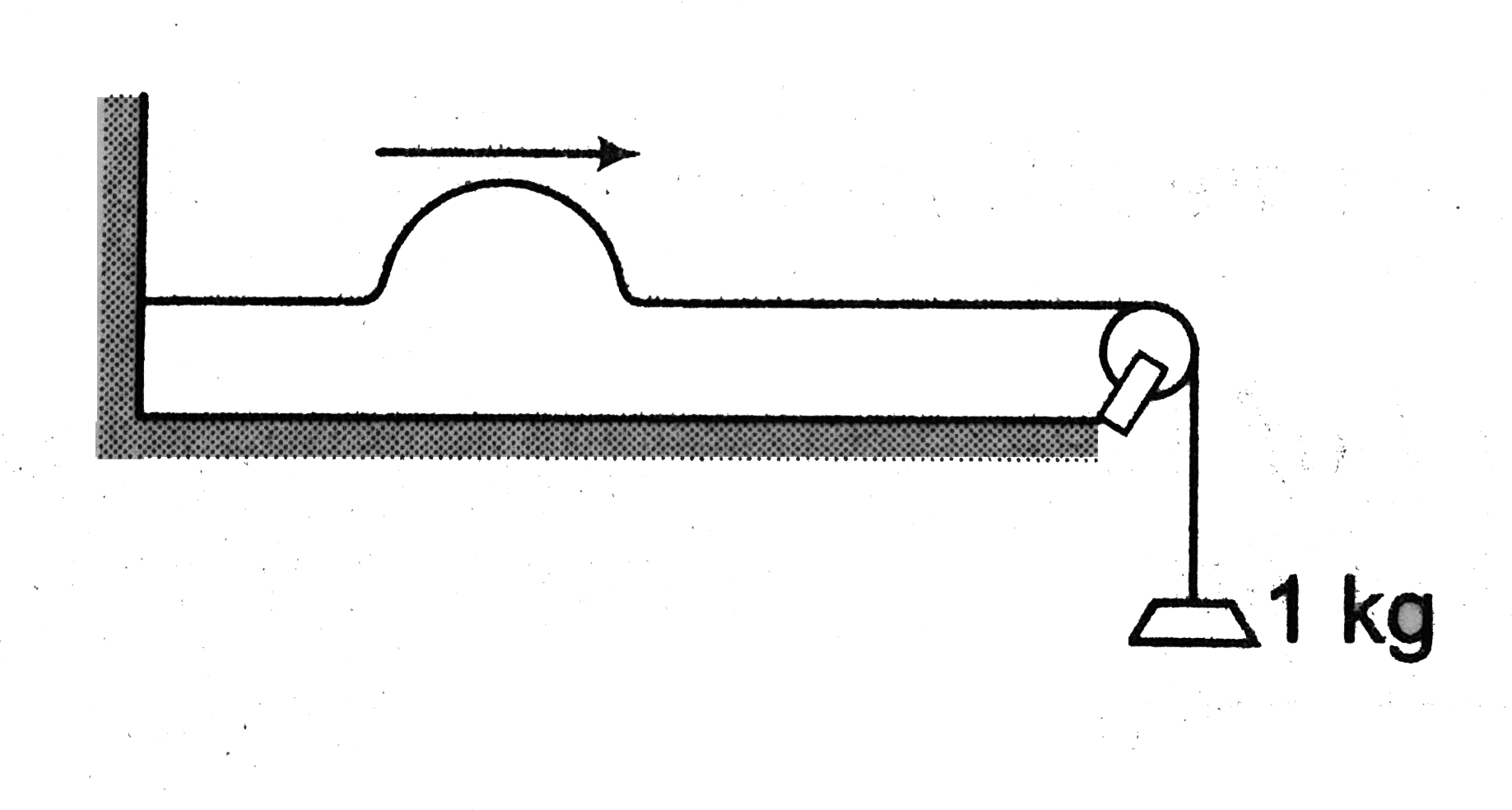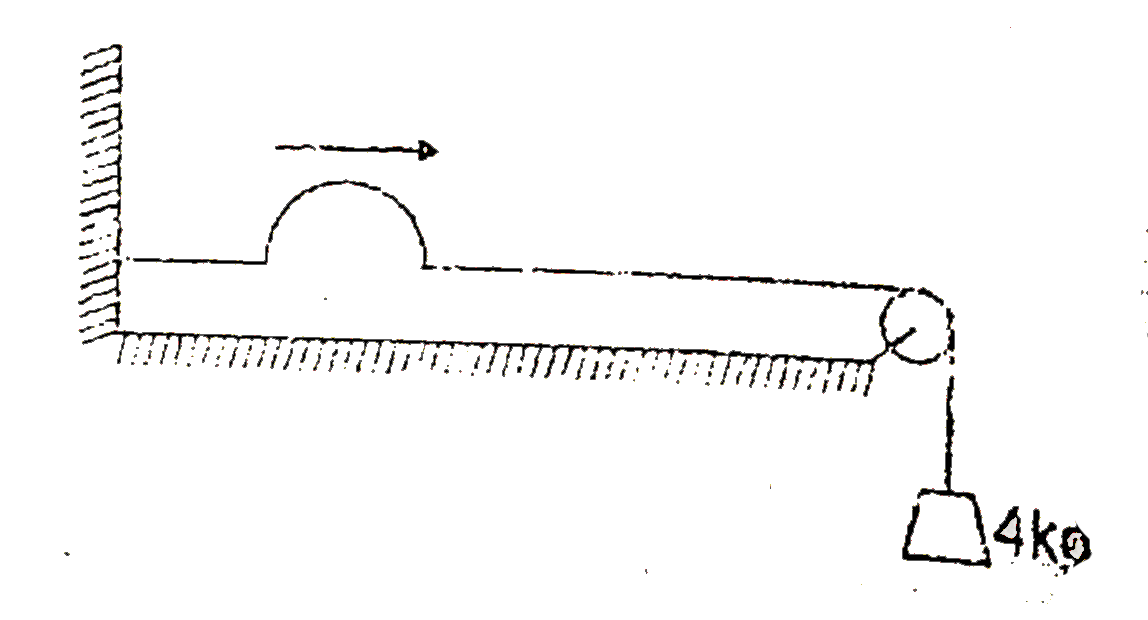Calculate the velocity of the travelling pulse as shown in the figure below . The linear mass density of pulse is 0.25kgm−1 . Further , compute the time taken by the travelling pulse to cover a distance of 30 cm on the string .

The tension in the string is T=mg=1.2×9.8=11.76N
The mass per unit length is μ=0.25kgm−1
Therefore , velocity of wave pulse is
v=√Tμ=√11.760.25=6.858ms−1=6.8ms−1
The time taken by the pulse to cover the distance of 30 cm is t=dv=30×10−26.8=0.044s=44 ms where ms = milli second .
Topper's Solved these Questions
- WAVES Book:FULL MARKSChapter:WAVES Exercise:Textual Evaluation Solved (Multiple Choice Questions )
Explore 15 Videos
- WAVES Book:FULL MARKSChapter:WAVES Exercise:Textual Evaluation Solved (Short Answer Questions )
Explore 15 Videos
- SOLVED PAPER 17 (UNSOLVED)Book:FULL MARKSChapter:SOLVED PAPER 17 (UNSOLVED)Exercise:Part-IV
Explore 10 Videos
- WORK, ENERGY AND POWERBook:FULL MARKSChapter:WORK, ENERGY AND POWERExercise:Additional Question Solved (Numercials)
Explore 11 Videos
Similar Questions
A wave pulse is travelling on a string of linear mass density 1.0gcm−1 under a tension of 1 kg wt. Calculate the time taken by the pulse to travel a distance of 50 cm on the string.Given g=10ms−2.
View SolutionA wave pulse is travelling on a string of linear mass density 10gcm−1 under a tension of 1kg wt. Calculate the time taken by the pulse to travel a distance of 50cm on the string. Take g=10m/s2.
View Solution
Knowledge Check
Figure shows a string of linear mass density 1.0gcm−1 on which a wave pulse is travelling. Find the time taken by pulse in travelling through a distance of 50cm on the string. Take g=10ms−2
 A0.5 sB0.0005 sC0.05 sD5 s
A0.5 sB0.0005 sC0.05 sD5 s
Figure shows a string of linear mass density 1.0gcm−1 on which a wave pulse is travelling. Find the time taken by pulse in travelling through a distance of 50cm on the string. Take g=10ms−2

View SolutionFigure showa a string of linear mass density 1.0gcm−1onwhichawaveps–eistravell∈g.F∈dthetimetakenbytheps–e∈travell∈gthroughadistanceof50cmonthestr∈g.Takeg=10 ms^-2.

View SolutionFigure showa a string of linear mass density 1.0gcm−1onwhichawaveps–eistravell∈g.F∈dthetimetakenbytheps–e∈travell∈gthroughadistanceof50cmonthestr∈g.Takeg=10 ms^-2.

View SolutionFigure shows a string of linear mass density 1.0g/cm on which a wave pulse is travelling. Find the time taken (in milli second) by the pulse in travelling through a distance of 60cm on the string. Take g=10m/s2.

View SolutionA way pulse is travelling on a string of linear mass density 6.4×10−3kgm−1 under a load of 80kgf. Calculate the time taken by the pulse to traverse the string, if its length is 0.7m.
View SolutionA way pulse is travelling on a string of linear mass density 6.4×10−3kgm−1 under a load of 80kgf. Calculate the time taken by the pulse to traverse the string, if its length is 0.7m.
View SolutionThe pulse shown in figure has a speed of 10cm/s .

(a) If the linear mass density of the right string is 0.25 that of the left string, at what speed does the transmitted pulse travel?
(b) Compare the heights of the transmitted pulse and the reflected pulse to that of the incident pulse.
View Solution
